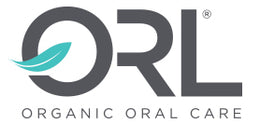Whether you’ve caught a whiff of something unpleasant in your mask or have recently heard about the mask breath (or mask mouth) phenomenon brought on by COVID-19 and are worried you may be afflicted, you’re not alone. Shortly after the pandemic began, reports of mask breath began popping up all over the place and they haven’t slowed yet. Here’s how to make sure your breath stays fresh while wearing a mask.
Brush Regularly
Roughly half the population has halitosis, the clinical name for bad breath, to begin with, and the most common culprit is poor hygiene. Make sure you’re brushing after each meal and flossing at least once a day to remove plaque and food debris.
Skip Alcohol-Based Products
Many oral care products contain alcohol to kill bacteria, but your body relies on keeping some of the “good” bacteria around to digest food and to keep the “bad” cavity-causing bacteria at bay. Moreover, when all bacteria are killed in one fell swoop, the cavity-causing bacteria will often recolonize first, throwing your oral balance out of whack. If you want to kill off the “bad” bacteria, try “starving” it by using products that contain xylitol instead.
Balance Your Oral pH
When saliva drops below 7.0 pH, it’s said to be acidic. Acidic environments promote demineralization and are very hospitable to cavity-causing bacteria. People who veer too much in either direction from a 7.0 pH are also much more likely to have gum disease. Of course, it’s not really realistic to maintain a neutral pH all the time even though balance is essential for a healthy mouth. You need to eat and probably aren’t going to give up your favorite vices like coffee, tea, energy drinks, citrus, or tomato sauce either. However, you can help restore balance after eating by neutralizing acids or by using oral care products designed with a neutral pH.
Check Your Diet
Sometimes the things we eat impact our breath from the inside out rather than just hanging around in our mouths. For example, people on a Keto diet or Atkins produce the ketone acetone when they go into ketosis. The scent can be unpleasant and will stick around until your body resumes normal function. Equally, things like garlic, onions, and certain spices are broken down though digestion and the compounds are sent through your blood everywhere including your lungs. That means your mask breath could linger until the last remaining traces dissipate. You’ll need to change your diet to address these kinds of concerns.
Avoid Stinky Habits
It probably goes without saying, but if you’re a tobacco user, the scent sticks to everything. Plus, smokers are twice as likely to develop periodontal disease, a condition where pockets form between teeth and gums, allowing bacteria to collect and infections to develop. The only way to really address this is to stop using tobacco.
Treat Xerostomia (Dry Mouth)
Without adequate saliva of the proper consistency, you can’t naturally rinse away debris, your mouth becomes more acidic, and your teeth demineralize. This is known as xerostomia, or dry mouth, and it sets the stage for cavities and periodontal disease. Many people with xerostomia don’t even realize they have it. They might clear their throats more frequently, have a cough, or feel thirsty. That unfortunately causes them to reach for a sugary drink or lozenges to alleviate the dryness, which only makes the problem worse. It’s possible to treat xerostomia, though the most common culprit is medications. If you think medications are to blame, speak with your doctor or pharmacist about alternatives. You can also ask about ways to treat the symptoms. For example, xylitol has been shown to improve saliva too. You can choose gums and mints that have it or select oral health care products that leverage it.
Breathe Through Your Nose
Sometimes people switch to breathing through their mouth while wearing a mask. That means they’re drawing air across tissues that are intended to stay moist, resulting in xerostomia. Again, you can treat the symptoms and improve moisture in your mouth, but in this case, it’s better to address how you’re breathing. Experts recommend practicing diaphragmatic breathing and taking five slow and deep breaths, in through your nose and out through your mouth, before you put your mask on. If you catch yourself breathing through your mouth while wearing your mask, press the reset button by inhaling deeply through your nose again several times.
Treat Underlying Conditions
Many medical conditions, including acid reflux, certain cancers, and even allergies, are associated with bad breath. If your mask breath isn’t going away despite addressing the things outlined here, connect with your dentist and primary care physician to uncover the underlying cause.
Banish Mask Breath with ORL
ORL can help you banish mask breath by addressing the root causes. Our pH-neutral formulas help restore balance, while the inclusion of organic xylitol can keep bacteria and cavities at bay, plus improve saliva. We also integrate healthful ingredients such as vitamins and minerals and plant-based essential oils to nourish your smile naturally. With delicious flavors like Fresh Mint, Cinnamint, and Bubblegum for the kids, it’s easy to find options your whole family will love and vanquish mask breath for good. Check out our full line of toothpastes, mouthwashes, and breath spray.


